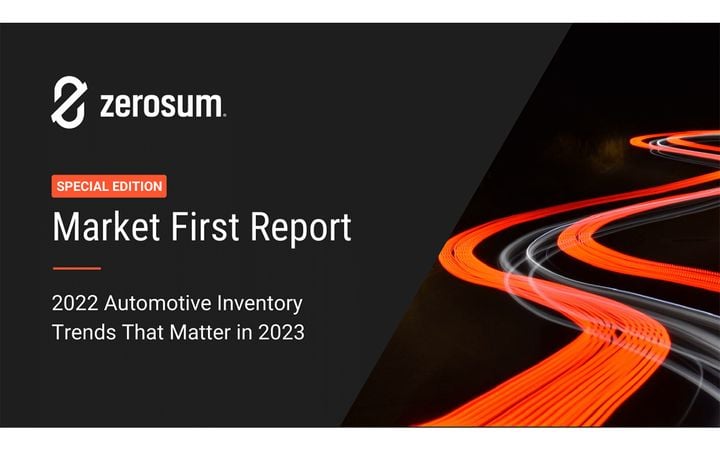
From inventory and pricing trends to future predictions, this report provides everything auto dealers need to know to prepare for a successful year in 2023.
IMAGE: Zero Sum
GRAND RAPIDS, Mich. – The ZeroSum Market First Report predicts month-end vehicle movement, providing vital supply and demand trend data to automotive marketers and dealers. ZeroSum uses predictive modeling to accurately estimate new vehicle inventory, pricing trends, and market share.
A lot has changed in the automotive industry in 2022, and ZeroSum has tracked it all. From inventory and pricing trends to future predictions, this report provides everything auto dealers need to know to prepare for a successful year in 2023.
ZeroSum’s Take: 2022 Top Trends that Matter in 2023
- Inventories are expected to slowly recover over the course of 2023 but not approach pre-pandemic levels.
- Turn rates fell towards the end of 2022, causing an increase in days supply.
- EV adoption is increasing, while Internal Combustion Engine (ICE) Vehicles remain dominant.
Inventory
Since the pandemic began, low inventory has been a concern for auto dealers. However, since August 2022, inventory levels have been steadily on the rise, now up 59% since January. By the end of December 2022, ZeroSum forecasts that there will be 1,669,952 available new vehicles and 1,526,639 available used vehicles. Although this is still below pre-pandemic levels, it represents a shift in the right direction.
Only four brands improved their average inventory position in 2022. Genesis was up 44%, followed by Alfa Romeo, GMC, and MINI. Meanwhile, Acura and Honda were hit the hardest, with decreasing average inventory of 64% and 61% respectively. Ford and Chevrolet had the most average inventory overall for the year. No brands were able to increase both average inventory and turn rate. For OEMS, General Motors weathered the inventory storm best with a 17% gain for GMC and only a 4% loss for Chevrolet and a 12% loss for Cadillac. Buick was hit the hardest, dropping 51% YoY.
Click here to read the full report.
Originally posted on F&I and Showroom














